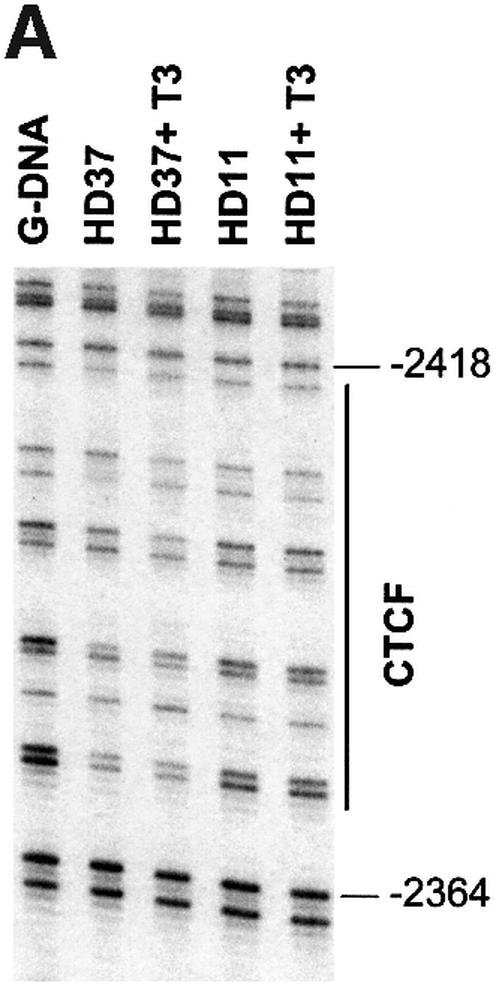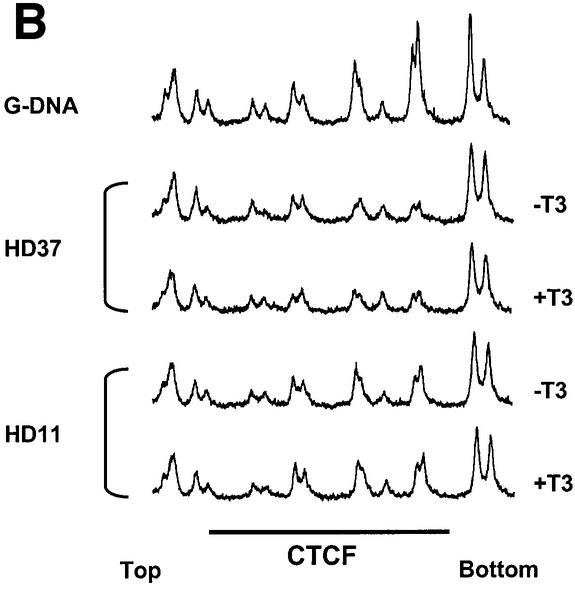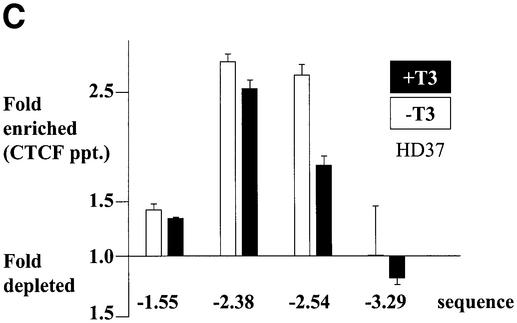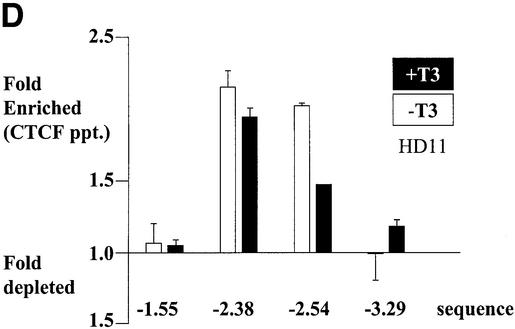
Fig. 4. CTCF remains bound to the chromatin upstream of the chicken lysozyme gene even after thyroid hormone-induced relief of enhancer blocking. HD37 cells (non-expressing) and HD11 cells (lysozyme expressing) were grown in the absence or presence of thyroid hormone. (A) DMS in vivo footprinting shows protection over the CTCF-binding site under all conditions when compared with the G-ladder (G-DNA) prepared from purified DNA. (B) The scan of the autoradiograph shown in (A) demonstrates that the footprint is not changed upon incubation with T3. (C and D) Chromatin immunoprecipitation with antibodies against CTCF shows CTCF binding on the endogeneous F1 element (–2.38kb) in HD37 cells and HD11 cells. Absence (–T3) or presence of thyroid hormone (+T3) does not change CTCF binding on the –2.38kb sequence. Fold enrichment or fold depletion is plotted relative to non-specific precipitation at CTCF free sites (–3.9 kb, –4.8 kb and –6.1 kb; see Materials and methods).



